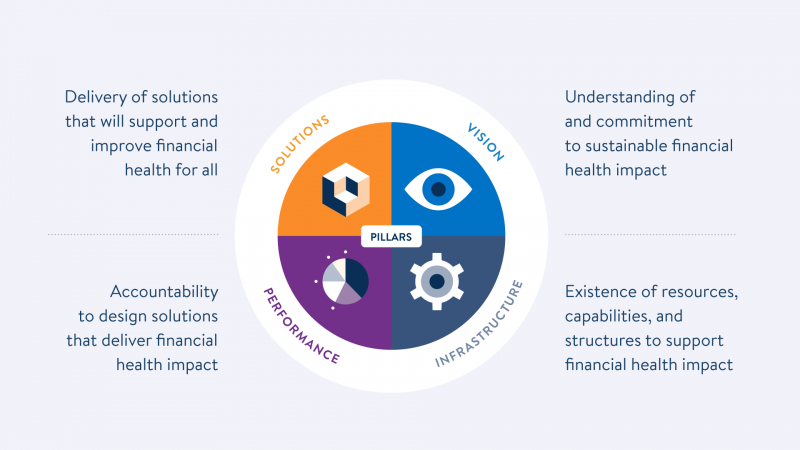Consumer demand for instantaneous information, certainty in their financial activities, and trust with their financial institutions to improve their financial health has never been higher.
However, expectations between banks and consumers are clearly misaligned. While the vast majority of consumers expect their primary financial institutions (PFIs) to help them improve their financial health, only 14% “agree strongly” that their PFIs actually deliver. This is a missed opportunity, since customers who believe their PFI supports their financial health are more satisfied, more loyal, and more profitable. In fact, these customers are five times more likely to report interest in purchasing additional products beyond core checking and savings products.
Despite knowing the business case for financial health, financial institutions are struggling to meet consumers’ needs as the competitive landscape radically shifts. Retailers-as-bankers, for example, have been largely successful among socially conscious, brand-loyal consumers whose needs are being addressed with new products that provide certainty and transparency with fee structures and innovative product features.
The shifting landscape and need to appease consumer demand has required a reevaluation of products at many traditional financial institutions. Consider these examples of banks that are evolving their products and offerings to better align with consumer wants and needs:
- In April 2021, PNC Bank (NYSE: PNC) announced its new Low Cash Mode feature for its Virtual Wallet, which will save its customers $125 million to $150 million on overdraft fees annually.
- In September 2021, Regions Bank began offering a new BankOn certified checking account.
- BCU, Fifth Third Bank, and Chime now permit customers to receive their direct deposit up to two days early.
- Huntington Bank introduced 24-Hour Grace to provide customers with more flexibility to bring negative balances whole before incurring a fee.
- Chase Bank increased its de minimis waiver to $50, meaning that customers who overdraft their accounts by less than $50 will not be charged non-sufficient funds (NSF) fees.
Digital Transformation Through Strategic Financial Health
These actions make sense, given that financial institutions need to differentiate themselves in this increasingly saturated marketplace. By updating their services to provide what consumers want and need, banks and credit unions can stand out while reaping business benefits. But digital transformation, decreased reliance on overdraft revenue, and early access to pay are only a few pieces of the puzzle. A comprehensive financial health strategy requires a cross-functional effort that combines customer experience, product, marketing, human resources, and community engagement.
That’s why, earlier this year, the Financial Health Network created the Financial Health Maturity Assessment Program (FinHealth MAP). Using this framework, businesses can identify ways to mobilize internally and increase their impact on customer financial health. The FinHealth MAP’s underlying purpose is to make the financial health business strategy more actionable and sustainable. This model can assess the effectiveness of the maturity of a financial health strategy and identify what is needed to improve impact.

Products Alone Are Not a Financial Health Strategy
It’s important not to think of a new product or service as a financial health strategy. A true financial health strategy requires a holistic approach to addressing consumers’ challenges and a commitment to long-term implementation. When customers strongly believe their bank looks out for their financial well-being, 84% are fully engaged with their bank, meaning they feel that their bank is the only company they need to meet their financial needs and plan to use it for the rest of their lives.
Your current and future customers are seeking your help to improve their financial health. It’s your leadership that forms the vision. It’s our support, guidance, and follow-through that ensures success.
The Financial Services Solutions team at the Financial Health Network collaborates with financial institutions to develop strategies that serve customers, employees, and communities both profitably and responsibly. As the leading voice on financial health, we have a track record of helping businesses optimize their financial health strategy for employees and customers.
No matter where you are on your financial health journey, the Financial Health Network is here to help. Reach out to the Financial Services Solutions team at mwalster@financialhealthnetwork.org to explore how to realize your vision for improving customer financial health. Learn more about the Financial Health Network’s consulting capabilities at https://finhealthnetwork.org/how-we-help/consulting-services/.

